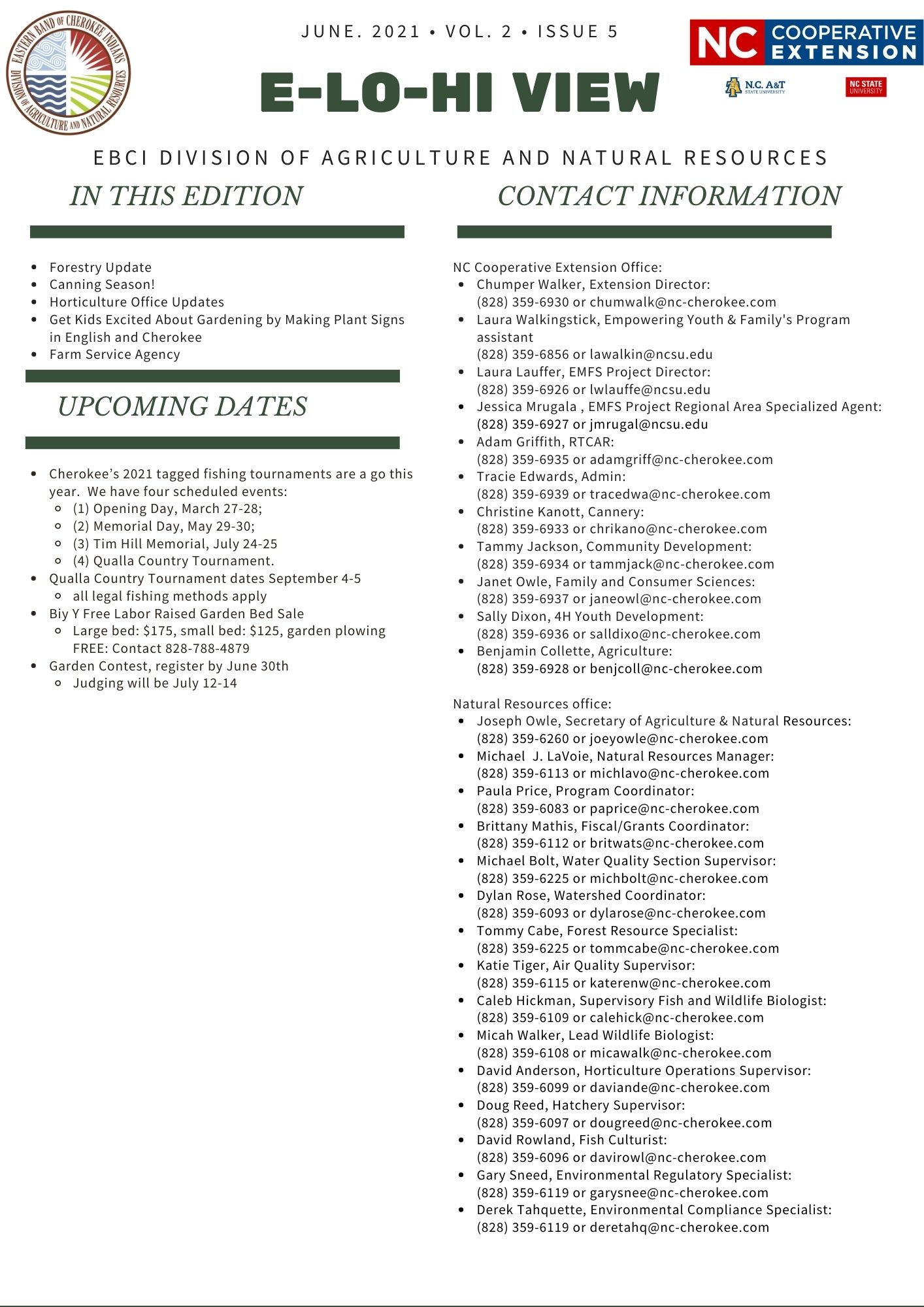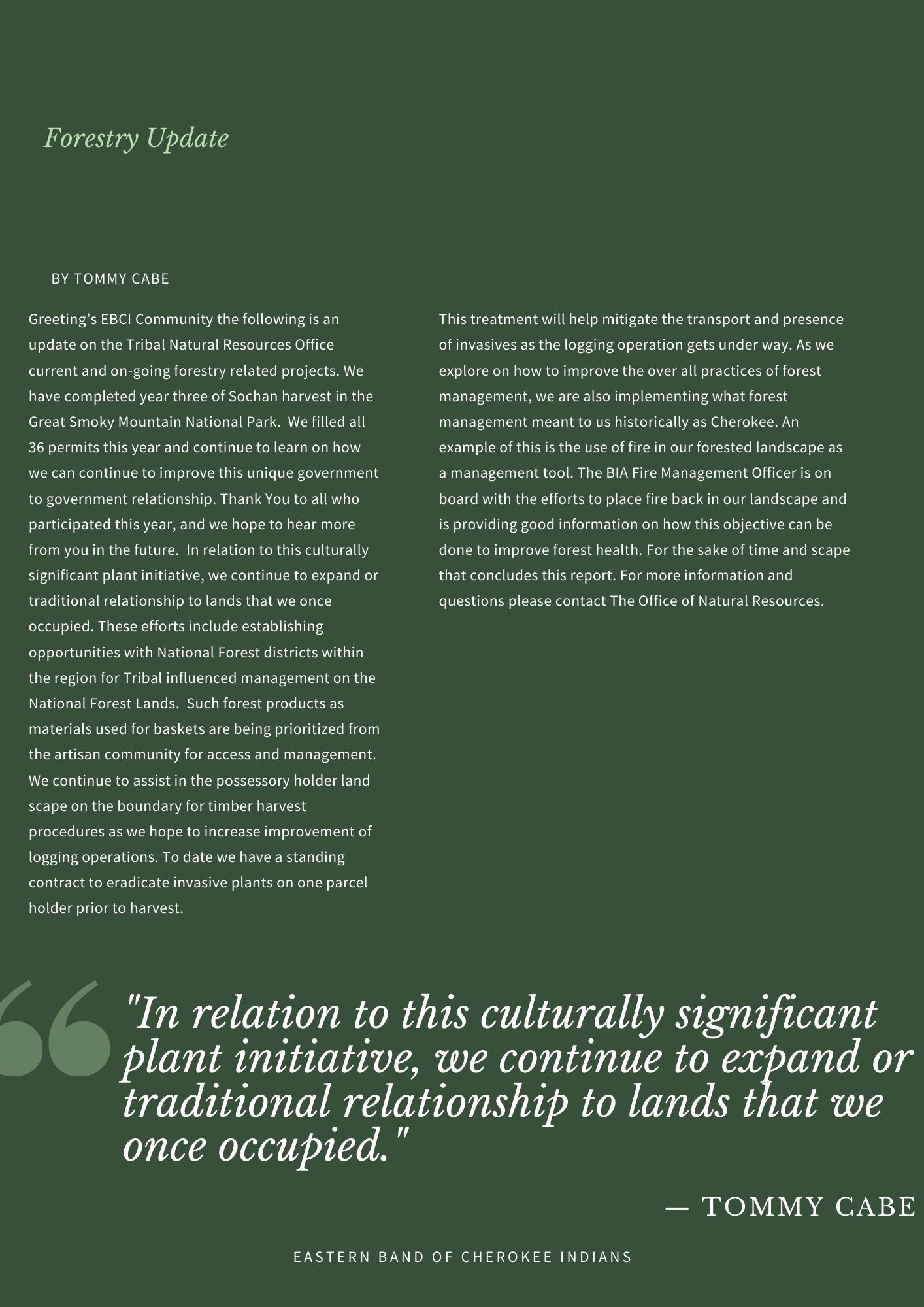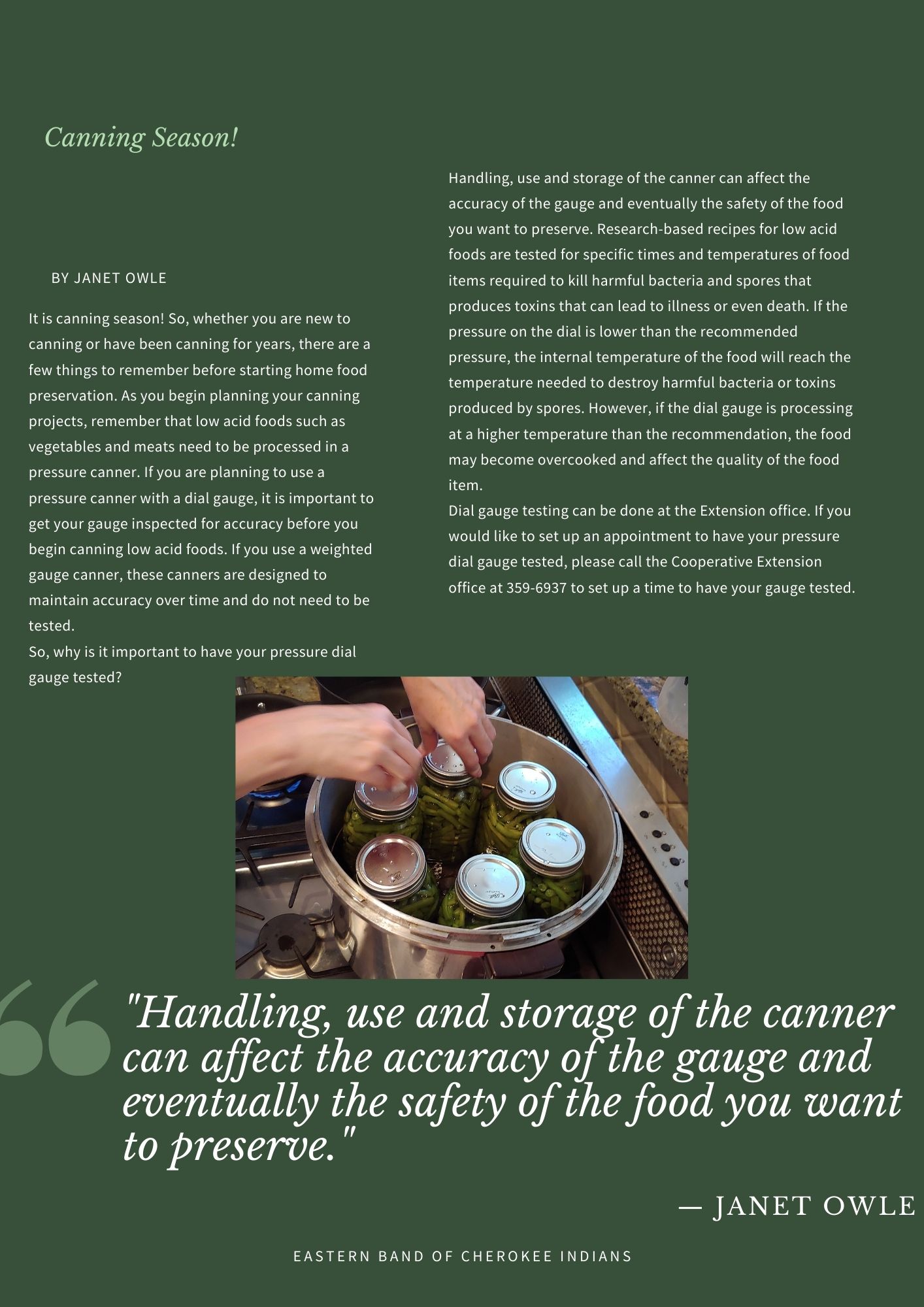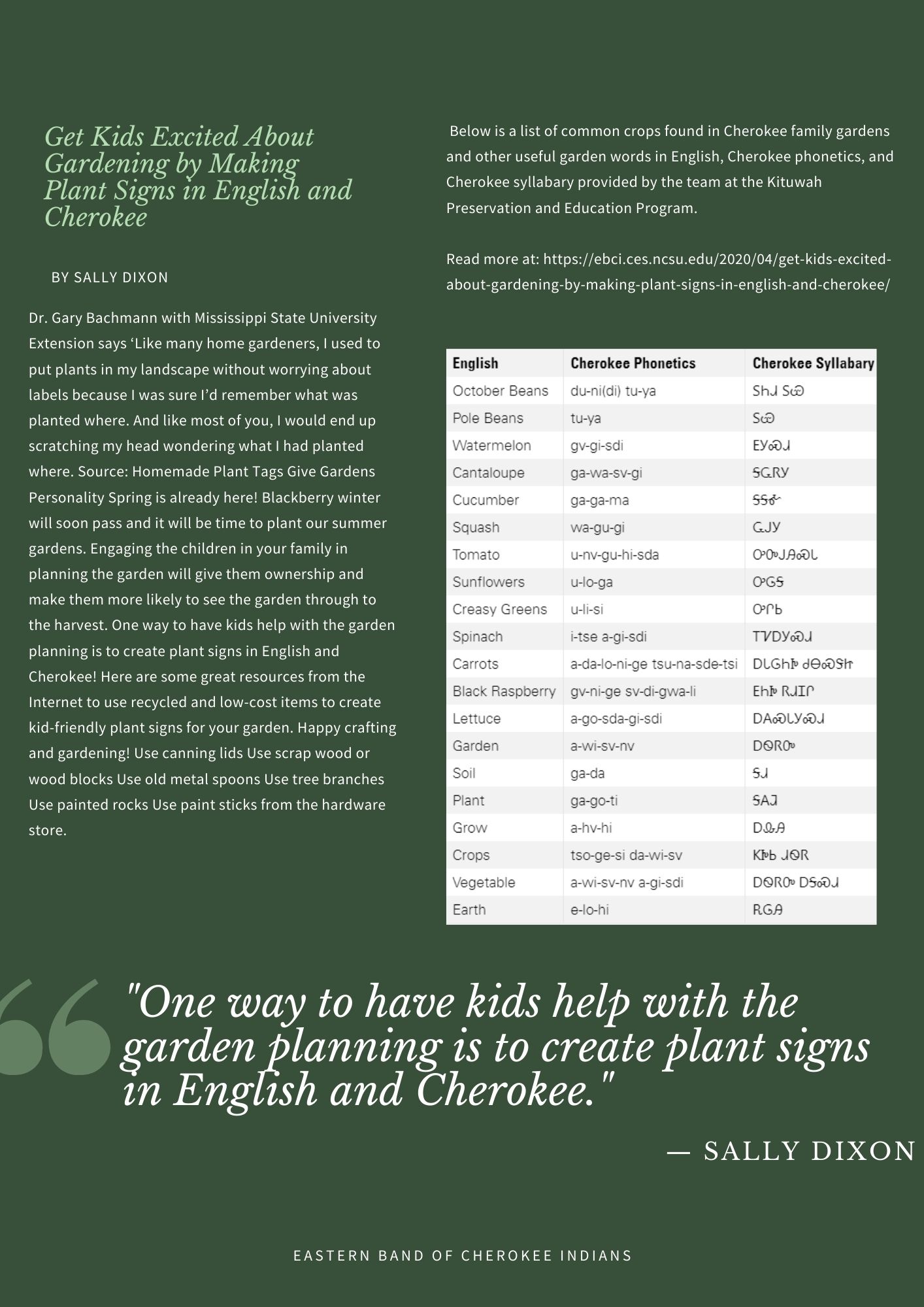June 2021 EBCI Division of Agriculture and Natural Resources Newsletter
go.ncsu.edu/readext?804039
en Español / em Português
El inglés es el idioma de control de esta página. En la medida en que haya algún conflicto entre la traducción al inglés y la traducción, el inglés prevalece.
Al hacer clic en el enlace de traducción se activa un servicio de traducción gratuito para convertir la página al español. Al igual que con cualquier traducción por Internet, la conversión no es sensible al contexto y puede que no traduzca el texto en su significado original. NC State Extension no garantiza la exactitud del texto traducido. Por favor, tenga en cuenta que algunas aplicaciones y/o servicios pueden no funcionar como se espera cuando se traducen.
Português
Inglês é o idioma de controle desta página. Na medida que haja algum conflito entre o texto original em Inglês e a tradução, o Inglês prevalece.
Ao clicar no link de tradução, um serviço gratuito de tradução será ativado para converter a página para o Português. Como em qualquer tradução pela internet, a conversão não é sensivel ao contexto e pode não ocorrer a tradução para o significado orginal. O serviço de Extensão da Carolina do Norte (NC State Extension) não garante a exatidão do texto traduzido. Por favor, observe que algumas funções ou serviços podem não funcionar como esperado após a tradução.
English
English is the controlling language of this page. To the extent there is any conflict between the English text and the translation, English controls.
Clicking on the translation link activates a free translation service to convert the page to Spanish. As with any Internet translation, the conversion is not context-sensitive and may not translate the text to its original meaning. NC State Extension does not guarantee the accuracy of the translated text. Please note that some applications and/or services may not function as expected when translated.
Collapse ▲Here is the June edition of our Agriculture and Natural Resources newsletter! See the images below.
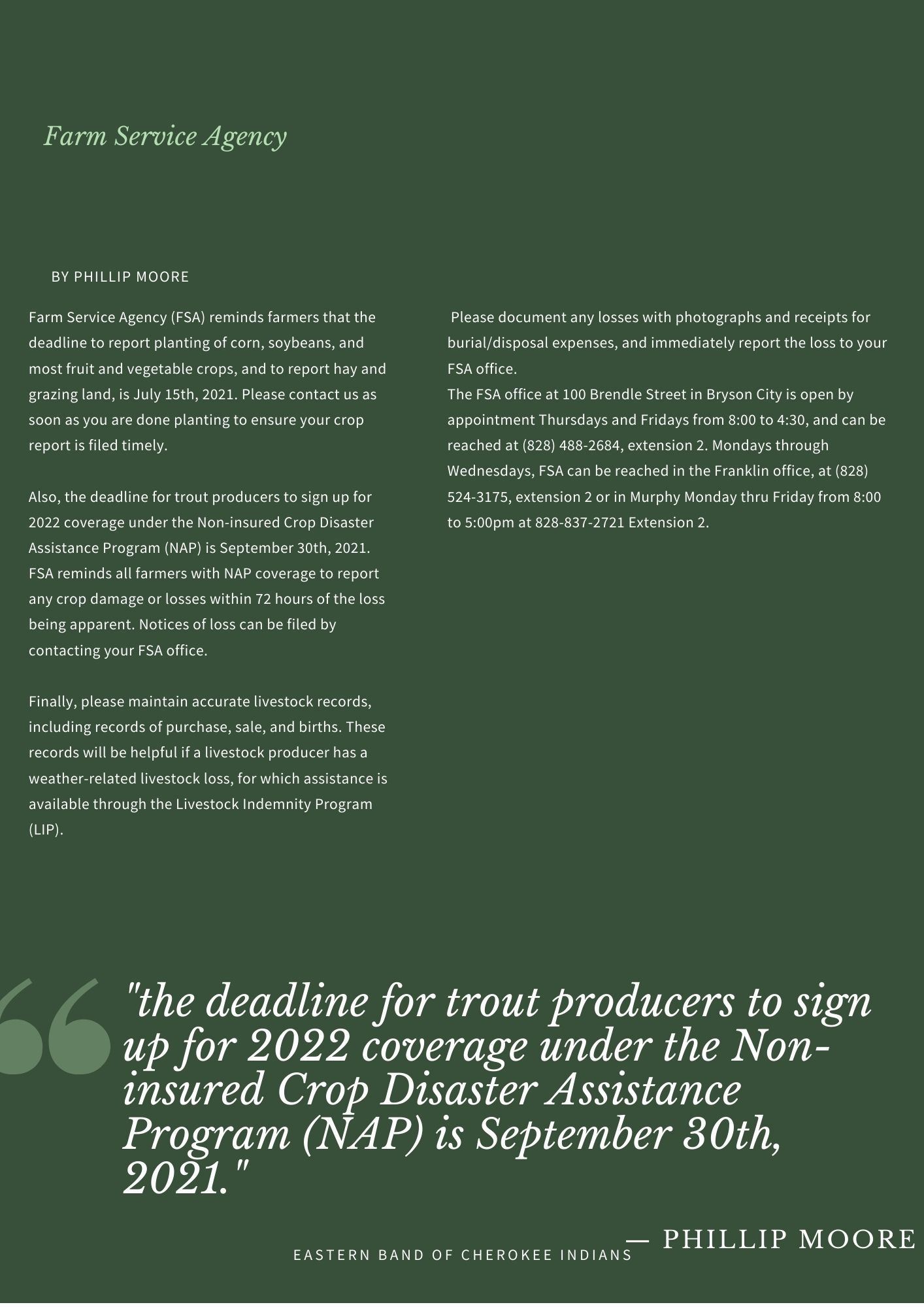
Farm Service Agency (FSA) reminds farmers that the deadline to report planting of corn, soybeans, and most fruit and vegetable crops, and to report hay and grazing land, is July 15th, 2021. Please contact us as soon as you are done planting to ensure your crop report is filed timely.
Also, the deadline for trout producers to sign up for 2022 coverage under the Non-insured Crop Disaster Assistance Program (NAP) is September 30th, 2021. FSA reminds all farmers with NAP coverage to report any crop damage or losses within 72 hours of the loss being apparent. Notices of loss can be filed by contacting your FSA office.
Finally, please maintain accurate livestock records, including records of purchase, sale, and births. These records will be helpful if a livestock producer has a weather-related livestock loss, for which assistance is available through the Livestock Indemnity Program (LIP). Please document any losses with photographs and receipts for burial/disposal expenses, and immediately report the loss to your FSA office.
The FSA office at 100 Brendle Street in Bryson City is open by appointment Thursdays and Fridays from 8:00 to 4:30, and can be reached at (828) 488-2684, extension 2. Mondays through Wednesdays, FSA can be reached in the Franklin office, at (828) 524-3175, extension 2 or in Murphy Monday thru Friday from 8:00 to 5:00 p.m. at 828-837-2721 Extension 2.





